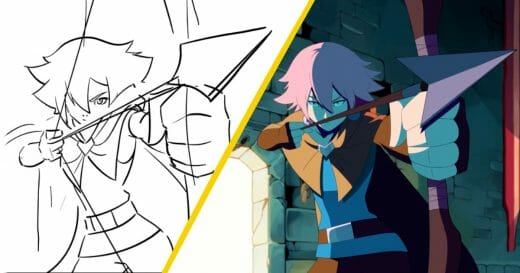
Jam Van is an animated musical travel series intended for preschool kids and families. The show’s eight episodes follow the exploits of Anne (the alligator) and Lamb as they drive across the US and hang out with some of the biggest names in contemporary music. Special guest stars include Boyz II Men, Sheryl Crow, Lin-Manuel Miranda, with each guest performing an original song in their city.
The series uses a blend of live-action and animation, which integrates textures with 2D rigged characters. The show was animated by a team of artists at Global Mechanic. We caught up with some of them to hear about how they got onto the project, what it was like to work with Tony award-winning creator and composer Bill Sherman, and how they approached an animation pipeline that combined mixed media. Read on to hear from producer Chris Brodie, creative director Ryan Kane, and episodic director Rachel Stolberg.
How did Global Mechanic get onto the children’s series Jam Van?
Chris: We had worked with the composer and co-creator Bill Sherman previously on a project called You, Me, and Community from PBS Kids, and in development on another series that unfortunately didn’t go into production. While creating the show with Brian Hunt and Believe Entertainment, Bill graciously said he knew a studio so they reached out to us and we started jamming, for lack of a better term.
What was it like to work with Bill Sherman?
Chris: It’s wonderful to work with him, Bill speaks music. Bruce Alcock, our co-owner and executive creative director at Global Mechanic comes from a musical background, so when the two of them start to share ideas back and forth, there’s nothing lost in translation. It’s fantastic to work with a composer who brings that level of talent and confidence to a project.
Ryan: Bill and his development partner Brian are such a pleasure to work with, they’re both really talented guys. We really appreciated how interested they were in us exploring different mediums for the series. One of the key selling points for the show is that it’s sort of a collage of different visual mediums and formats, and both Bill and Brian really encouraged that. It’s rare that clients or partners let you just go with it; they usually have preconceived notions. But for Jam Van, they wanted something unique looking. And they trusted us to do that well.
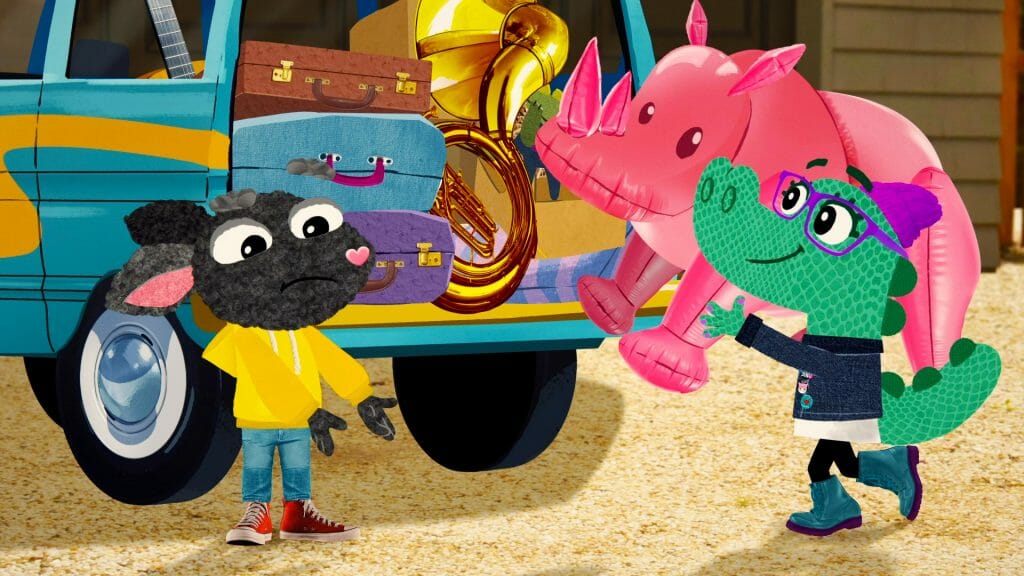
What attracted your team to the series? Was there something in particular about it that excited you?
Chris: Here at Global Mechanic we’re intrinsically attracted to projects that have a musical element. And, we love to get weird with multi-disciplinary projects that explore new mediums. The fact that the series concept for Jam Van combined both of these made it an easy sell for us.
Ryan: Working with Bill’s music is always exciting from a creative perspective. He has a real talent for crafting catchy earworms, but he does it in a way that feels genuine. You know how you dread getting a song like Baby Shark stuck in your head for days? Well, that’s not the case with Bill’s music. It’s impeccably composed, and it’s the kind of music that you won’t mind having stuck in your head all day.
In every episode of the series, viewers meet a musical artist from that city. So each episode had its own song composed for the artist. Many of them were composed by Bill, and some were composed by the artists themselves. Every time one of these songs came to us, our eyes lit up. They were all just great songs that we were excited to animate for.
Rachel, what was your experience like, being an episodic director mentored by Bruce Alcock?
Rachel: I’ve had the privilege to work with Bruce for a few years now and he is always exposing me to new influences and unconventional ideas. I love that he encourages everyone to experiment and find what feels right, and you can see that at the heart of Jam Van.
Directing on Jam Van was something special because Global Mechanic invested in three first time episodic directors: myself, Eden Timm and Sara Franco. We each directed two episodes, assistant directed for each other and learned together new responsibilities of the director role. Along with experienced advice from Bruce Alcock, Tim Stuby and others, I never felt thrown in the deep end or overwhelmed despite so many new challenges. I don’t think the success of that can be overstated! On top of that, everyone bringing their ideas together really highlights the diversity featured in the show. I’d do it all again in a heartbeat!
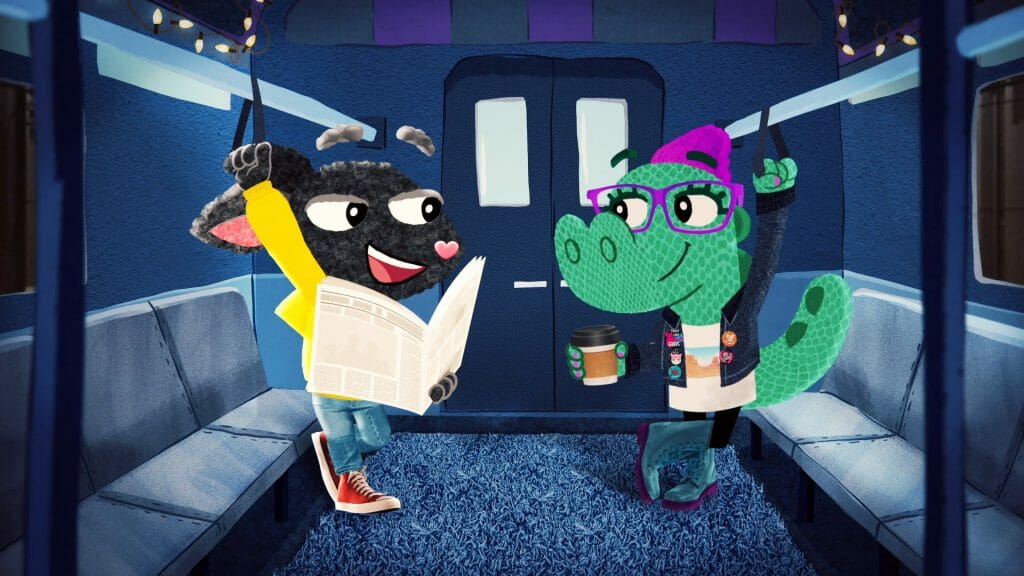
How does animating for a preschool series differ from animating for an adult animation series?
Chris: Children’s series are actually what Global Mechanic started out working on back in the early 2000s. We did series work for WGBH and PBS on a show called Fetch! With Ruff Ruffman. Following that we worked on Plum Landing, another children’s show, but over the years we did delve into older-skewing content, like Birdgirl for Adult Swim.
Ryan: I actually came straight to Jam Van after working on Birdgirl. One show basically rolled into the other. Obviously there is a massive shift in tone when you move from adult content to childrens’ content, but as creatives, we approach things the same way regardless of the age range. The goal is always to be as creative as possible.
In some cases, animated series for children can have visuals that are overly simplistic. It is a common belief that young kids won’t understand complex visuals such as collages or too many colors. However, it is important to give children more credit and not assume what they can or cannot understand. The focus should be on creating engaging content that challenges children and allows them to decide what they like.
Rachel: I agree that animating for kids isn’t really different. Every individual production will have unique differences based on the end goal for the show’s look, style, and tone. And those differences aren’t always based on the age of the target audience.
What led you to take on a series that blends live action and animation, and how did you approach this unique style?
Chris: Every opportunity that we get to do something experimental or outside the norm, we take. We love doing these types of projects because it’s fun and challenging to explore new territory. And every time we do, we learn from it. The more weird, beautiful projects we take on, we develop a broader toolkit that we can refer back to on the next one.
Ryan: We know what Toon Boom Harmony is good at. It’s great at the part of the pipeline that includes animation, rigging, and storyboarding. What was unknown for us was how we were going to bring in live-action plates, they could be 6k or 8k plates that were shot. We figured out that using After Effects would help us create an expedient workflow for that.
Despite using After Effects, we did rely on Harmony to lead the production. We didn’t want the animators to feel disconnected. We didn’t want them to be in there animating without knowing their framing or positioning. So we did a few things to help with this. For example, camera movements were done in Harmony.
One challenge that came up was that there were photoshoots going on all around the world, while we were animating. Because of this backplates were unknown while we were starting to animate. To help with this we created a proxy pipeline that had low-res proxies put together by our Photoshop team. These gave our animators a good idea of background and foreground elements, and something to play off of.
Rachel: It took a lot of flexibility because so many different pieces were happening at once. We had photographers out on location, animators animating characters in Harmony, and videos from the music stars all coming in. We had to find a way to piece it all together. Even though we boarded all of this out, things changed. Musical guests would change, or we wouldn’t be able to get the photographs we wanted of some locations. Because of this, we had to plan extra time to ping pong around what was leading. It definitely wasn’t your standard, smooth back-to-back production.

Jam Van also uses a beautiful mixture of textures. Could you speak a bit about why your team chose this artistic direction for the series?
Ryan: Even though it’s more challenging, we love using texture here. Since the show was using mixed media, we felt that the characters needed to have photorealistic textures. We felt this would create a thread throughout all the different media, like stop motion, music videos, and images, that show up throughout the series.
We didn’t want Jam Van to become a flat vector show, and we felt that texture would add an element to the series that would feel different from other kids’ series. It really helps the show stand out. Sometimes people stay away from texture because it’s difficult – but we as a studio never want to back down from a beautiful look just because it’s harder and takes more time.
Rachel: I don’t think we would have been able to make the textured look happen if it hadn’t been for the Harmony 20 release of weighted deformers. This was a game-changer in terms of being able to add photographic elements to the characters. The weighted deformers gave us a lot of control over how to move those pieces. We could move them just like any other piece.
Can you describe any specific animation techniques that were useful for this series in particular?
Rachel: Whenever Harmony rolls out new features, I like to see what they can do, and how I can use them in ways that will benefit everyone on the team. It took many hours, but I was able to develop a complicated leg structure for the characters that uses the two-point constraints. Ultimately, I really wanted to not have to settle for FK or RK legs, because both have issues when you’re using them. I wanted to be able to move the hips and have the feet stay on the ground, or move the foot and not have the whole body move or become detached at the hips. I was so excited when I figured out a way to do this with the two-point constraints!
Ryan: Scripting became our best friend for this series. We were quite demanding with the layers we required for compositing. To help with this, we were able to get custom scripts written that allowed us to output all of the layers we needed into the right folders. It was almost like a 3D pipeline in that we were able to get all these different render layers together.
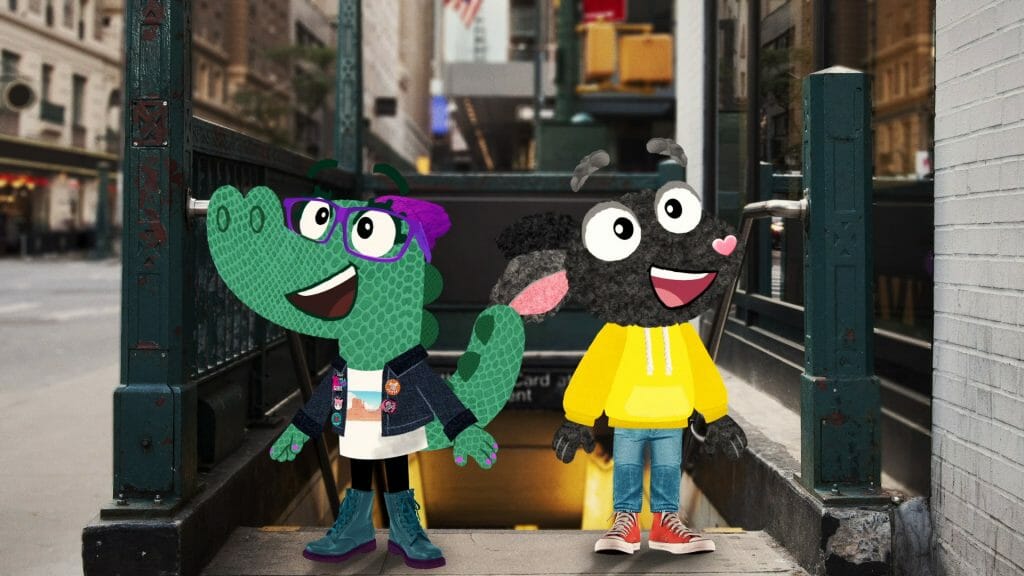
What do you hope it is that the kids and potential adult viewers connect with, or take away from the show?
Ryan: Jam Van’s two main characters are purposefully very different from each other. I hope that viewers connect with the two characters, and are able to learn from them that difference isn’t a bad thing. I’m optimistic that adult viewers will be captivated by Jam Van and won’t want to leave the room. We understand that music in kids shows can sometimes be grating, which is why we took a different approach. We’ve curated an impressive lineup of artists that you wouldn’t typically see in this type of series. I hope that parents in the room will appreciate the music and enjoy the show just as much as their kids.
Rachel: I hope that Jam Van inspires a sense of adventure in viewers. The style of the show, the music sequences, and the characters in the show are all about doing something new. Almost every aspect of the show is about adventure, and I hope that comes through. Over the last few years of the pandemic especially, people have been very confined to their own spaces. There’s likely young kids out there who have never traveled yet in their life. So I hope Jam Van shows them how many different places and settings and things there are out there in the world to see.
Chris: Yes! Sometimes we describe Jam Van as a travel show for preschoolers. Our goal was to inspire viewers to not just go see famous monuments, but to go out and explore cities, meet people, experience the micro-cultures of a place, and try different foods. That’s the heart of this show.
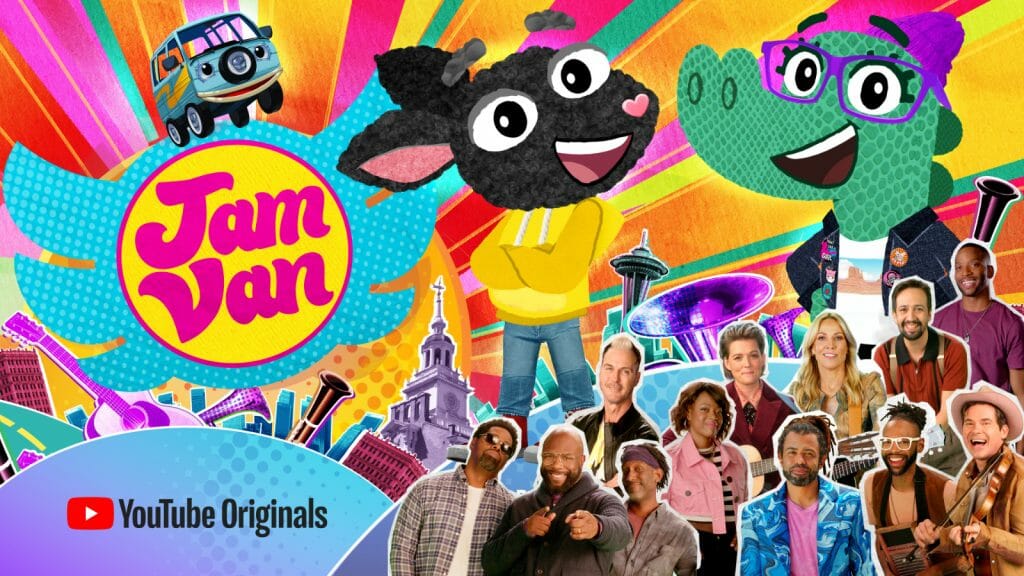
- Want to learn more about Global Mechanic? Be sure to visit the studio’s website for details about their series and commercial work and follow the studio on LinkedIn.
- Ready to start animating your next project? Artists can download a 21-day trial of Harmony Premium.



